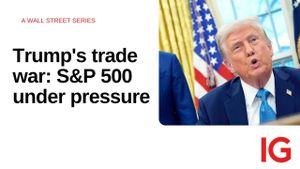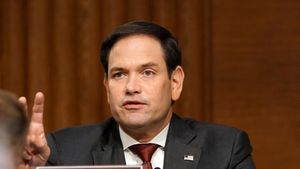The Russian government has officially granted Mexico, Argentina, and five other nations access to its foreign exchange and derivatives markets, marking a significant expansion of international financial relations. Announced on February 2, 2025, this decision allows these countries to join the ranks of 40 states permitted to participate in Russia's forex market, originally established as part of new economic measures introduced back in September 2023.
Initially, only Brazil, Cuba, and Venezuela were recognized as Latin American players within this financial arena. With Mexico entering the fold, the shift seems strategically timed, occurring just one day after the United States imposed tariffs on its imports, highlighting the increasingly complex dynamics of international trade.
The Russian government stated the purpose behind this initiative is to boost the efficiency of direct currency conversion mechanisms for national currencies from 'friendly and neutral' countries. This also supports the establishment of direct ruble quotations to meet the demands of the Russian economy for payments made using national currencies. The timing signals Moscow's intent to solidify its relationships with these nations, positioning the ruble more prominently on the global stage.
Besides Mexico and Argentina, the newly authorized countries include Cambodia, Ethiopia, Laos, Nigeria, and Tunisia. This expansion reflects Russia's desire to cultivate economic partnerships with non-Western allies, particularly under challenging geopolitical circumstances.
The decision constitutes another step away from reliance on traditional currencies like the U.S. dollar and the euro for international transactions. Russia aims to create financial buffers and strengthen economic resilience against sanctions targeted at its global trading capabilities.
The announcement of Mexico’s access to Russian forex markets arrives at a precarious moment, just after U.S. President Donald Trump’s administration introduced steep tariffs on its products, increasing tensions within North America. The arbitrary nature of these tariffs, described by industry analysts as potentially damaging not just to the Mexican economy but to broader regional trade logistics, adds layers of complexity to Mexico's foreign policy decisions.
It is worth highlighting how closely intertwined U.S. and Mexican economies are. Approximately 80% of Mexico's exports head to the United States, and any significant tariff imposition can serve to disrupt not just bilateral trade but also regional supply chains.
Further complicity arises as Mexico navigates its economic dependencies. The U.S. is responsible for nearly 41% of foreign direct investment (FDI) inflows to Mexico, amounting to around $242.86 billion from 2006 to September 2024. The increasing uncertainty may compel Mexico to diversify its international trade relations—a move evidenced by its pursuit of Russian economic opportunities.
The mention of the Russian forex market is particularly opportune because it corresponds with structural changes within Russia itself, which is actively seeking new paths to engage with economies less influenced by U.S. sanctions. The shared goal among the countries, it seems, is not only to develop their domestic markets but also to establish alternative financial frameworks capable of withstanding pressure from Western powers.
The Russian government has ushered these relationships with statements indicating full support for increased cooperation. “This agreement will improve the efficiency of the mechanism for converting national currencies of friendly and neutral countries, establishing direct ruble quotations,” the Russian official report detailed.
Mexico's involvement within this new economic paradigm signifies its growing importance as it navigates not only its confrontation with U.S. tariffs but also its long-standing position as a formidable player among Latin American economies. The ramifications could be extensive, not only reshaping Mexico's international alliances but also prompting broader discussions about the future currency strategies of developing nations.
Observers remain vigilant about the potential fallout from these shifts, especially as they pertain to debt management and trade practices involving forex. Established markets will likely respond differently than those newly enacting their first explorations within this typically opaque sector.
At its core, this development may signal more than just financial maneuvering. It reflects the shifting allegiances and transformative strategies characteristic of our contemporary geopolitical climate—strongly emphasizing the importance of both currency and economic partnership for nations seeking security and stability.
The coming months will be telling as Mexico navigates its newfound access to the Russian forex market, explores the prospects of business within this unfamiliar territory, and strategically assesses its position within the broader expanse of international trade. Global trade dynamics are rapidly shifting, and engaged observers will look closely at how these alterations affect current relationships and direct financial flows.
Mexico's entry signifies both opportunity and risk along its path as it reminds the world of the fluid and often unpredictable nature of international economic engagements. Will this move bolster Mexico’s negotiating power on the world stage, or will it introduce new challenges with unforeseen consequences? Time alone will tell.



